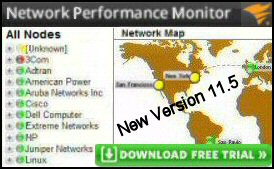Introduction to Microsoft Exchange 2007 Server
As soon as you install Exchange 2007 Server you cannot help but notice the new Server Role Selection wizard. This encourages you to plan the function of each Exchange Server from the outset. For small companies, this means deciding how many tasks to combine on one Server.
Having a new server is a great excuse for buying new hardware; this is especially true of Exchange 2007 as the production version will only run on 64-bit processors.
ExchangeServer 2007 concentrates on its core email business. Gone are peripheral such as Conferencing and Instant Messaging. However Exchange Server 2007 will allow you to deliver voicemail to the Outlook inbox.
This page represents my site map for Exchange 2007.
Microsoft Exchange 2007 Server Topics
- Exchange 2007 Migration Advice
- Make the Transition from Exchange 2003 to Exchange 2007
- Installing Exchange Server 2007
- Exchange 2007 Server Compatibility
- Importance of Exchange Server 2007 SP1
- Server Roles in Exchange 2007
- Client Access Server (CAS) Role
- Hub Transport Role
- SMTP Connectors
- Mailbox Role – New Features
- GAL (Global Address Lists)
- Recipient Types in Exchange 2007
- Creating Mailboxes
- Edge Transport Server Role
- Cluster Continuous Replication (CCR)
- Storage Groups and Stores
- ExBPA (Exchange Best Practice Analyzer)
- Eseutil /switches
- Exchange 2007 NDRs
- OWA 2007 (Outlook Web Access)
- Exchange Server 2010
- Try PowerShell Commands
♠
Introduction to Exchange 2007
My mission for this section is to give you advice on how to Configure, Migrate and Troubleshoot Exchange 2007. For example, Exchange 2007 has a new powerful yet simple installation mechanism.
Most of the big changes in directory services came between Exchange 5.5 and Exchange 2000. Nevertheless, there are lots, of neat improvements in Exchange 2003 that were missing in Exchange 2000. For example, RPC over HTTP, ExDeploy, ExMerge and Query Based Distribution Groups.
Exchange 2007 continues this trend of steady improvements rather than revolutionary new ways of delivering email, for example, CCR (Cluster Continuous Replication) and Unified Messaging. I also find that some of the ‘rough edges’ have been removed. You can see what I mean by navigating smoothly around the new Exchange Management Console, compared with getting lost in the old Exchange System Manager.
Guy Recommends: A Free Trial of the Network Performance Monitor (NPM) v11.5
v11.5
SolarWinds’ Network Performance Monitor will help you discover what’s happening on your network. This utility will also guide you through troubleshooting; the dashboard will indicate whether the root cause is a broken link, faulty equipment or resource overload.
What I like best is the way NPM suggests solutions to network problems. Its also has the ability to monitor the health of individual VMware virtual machines. If you are interested in troubleshooting, and creating network maps, then I recommend that you try NPM now.
Download a free trial of SolarWinds’ Network Performance Monitor
Is Exchange 2007 Server really easier than Exchange 2003?
Can it be true that Exchange Server 2007 is easier than Exchange 2003? Guy says it depends what you mean by easier! Exchange 2007 is more straightforward to get started, but it has more individual components to consider than Exchange 2003. Yes there are new exiting features, but each item needs time to evaluate. It’s true that the wizards are cleverer, and they guide you surely through the necessary configuration, but there are more of them to get to know.
Transition or Migrate to Microsoft Exchange 2007 Server
Good news, Microsoft has always been good at migrations and transitions, after all it’s in their best interests to make the latest and most expensive systems easily accessible. The secret of a successful transition is to seek guidance from Microsoft’s installation wizards. See more on the transition to Microsoft Exchange Server 2010.
CAS (Client Access Server) Role for Exchange 2007 Server
Actually, the CAS role for Exchange 2007 server is installed by default. However, it is easy to add CAS as a role if you omit to select this role on the initial installation. Two things you should remember about CAS, this role is needed for each site where you have Exchange 2007 Mailbox servers, and CAS is the gateway for OWA clients.
Cluster Continuous Replication
Cluster Continuous Replication gives administrator’s peace of mind that their mailbox servers are protected from a single point of failure. To master this technology, I advise investigating the components, and playing with Cluster Tools such as the Failover Cluster Management tool on Windows Server 2008. Then develop a CCR plan to suit your network, only then are you ready to install the Exchange Server 2007 mailbox servers.
Exchange Version History
This history of Exchange server is typical of Microsoft, they get there in the end Exchange Server 2007 is an excellent email system. However, early versions were weak, had little security, and only supported about 500 users.
- Exchange 2010
- Exchange 2007
- Exchange 2003 Exchange 7
- Exchange 2000 Exchange 6
- Exchange 5.5
- Exchange 5
- Exchange 4 (Joke product released in 1996)
- Before that there was Microsoft Mail v 3.5.
Guy Recommends: SolarWinds’ Free Bulk Mailbox Import Tool
Import users from a spreadsheet, complete with their mailbox. Just provide a list of the users with the fields in the top row, and save as .csv file. Then launch this FREE utility, match your Exchange fields with AD’s attributes, click and import the users. Optionally, you can provide the name of the OU where the new mailboxes will be born.
There are also two bonus tools in the free download, and all 3 have been approved by Microsoft:
- Bulk-import new users and mailboxes into Active Directory.
- Seek and zap unwanted user accounts.
- Find inactive computers.
Download your FREE bulk mailbox import tool.
If you like this page then please share it with your friends
See more Microsoft Exchange Server 2007 topics:
• Exchange 2007 Home • Compatibility • Recipients • Eseutil • Edge • Free Syslog Analyser
• Install • Server Roles • CAS Role • Hub Transport • SMTP Connector • NDRs • Exchange CCR
• Solarwinds Exchange Monitor • Mailbox Role • Create Mailbox• OWA • GAL • Mailbox Stores


